
A truly wild concert of free jazz from Cecil Taylor's transatlantic orchestra, captured live at the 1984 Jazz Jamboree in Warsaw, Poland, bringing together impressive improvisers from the US--William Parker, John Tchicai, Jimmy Lyons, Karen Borca, Frank Wright, & Henry Martinez--with European Free Jazz leaders Tomasz Stank, Enrico Rava, Conrd Bauer & Günter Hampel.
In Stock
Quantity in Basket: None
Log In to use our Wish List
Shipping Weight: 3.00 units
EU & UK Customers:
Discogs.com can handle your VAT payments
So please order through Discogs
Sample The Album:
Cecil Taylor-piano, leader
Tomasz Stanko-trumpet
Enrico Rava-trumpet
Conrad Bauer-trombone
Jimmy Lyons-alto saxophone
Frank Wright-tenor saxophone
John Tchicai-tenor saxophone
Karen Borca-bassoon
Gunter Hampel-bass clarinet, vibraphone
William Parker-double bass
Henry Martinez-drums
Click an artist name above to see in-stock items for that artist.
UPC: 5904441617009
Label: Listen! Foundation (Fundacja Sluchaj!)
Catalog ID: 16 | 2021
Squidco Product Code: 31313
Format: CD
Condition: New
Released: 2021
Country: Poland
Packaging: Cardboard Gatefold
Recorded at Jazz Jamboree, Congress Hall PKiN, in Warsaw, Poland, on October 26th, 1984, by Polskie Radio .
"In 1984 Cecil Taylor came to Poland for the second time. His first performance in Poland was in 1968 in Warsaw Philharmony where he presented a solo piano recital. After 16 years he returned to the Jazz Jamboree festival but that time with a large group of internationally acclaimed and most important improvisers on the free jazz scene. The lineup was incredible. Two great trumpeters one from Poland, Tomasz Stanko another from Italy, Enrico Rava. In the reed section, long time Cecil's collaborator, legendary altoist Jimmy Lyons with his wife bassoonist Karen, John Tchicai, Frank Wright Jr. on tenor saxophones, phenomenal trombonists Conrad Bauer, iconic vibraphone and bass clarinet player Gunter Hampel and finally a gorgeous rhythm section with Henry Martinez on drums and great William Parker.
Together they played for over one hour set of unbelievable, strong, and magnificent music in front of the hall lined to the brim. Here you have the whole Cecil Taylor concert with Music From Two Continents."-FSR
Artist Biographies
• Show Bio for Cecil Taylor "Cecil Percival Taylor (March 25, 1929 Ð April 5, 2018) was an American pianist and poet. Classically trained, Taylor is generally acknowledged as having been one of the pioneers of free jazz. His music is characterized by an extremely energetic, physical approach, producing complex improvised sounds, frequently involving tone clusters and intricate polyrhythms. His piano technique has been likened to percussion, for example described as "eighty-eight tuned drums" (referring to the number of keys on a standard piano). He has also been described as "like Art Tatum with contemporary-classical leanings". Taylor was raised in the Corona, Queens neighborhood of New York City. As an only child to a middle-class family, Taylor's mother encouraged him to play music at an early age. He began playing piano at age six and went on to study at the New York College of Music and New England Conservatory. At the New England Conservatory, Taylor majored in composition and arranging. During his time there, he also became familiar with contemporary European art music. Bartok and Stockhausen notably influenced his music. In 1955, Taylor moved from Boston to New York City. He formed a quartet with soprano saxophonist, Steve Lacy, the bassist Buell Neidlinger, and drummer Dennis Charles. Taylor's first recording, Jazz Advance, featured Lacy and was released in 1956. It is described by Cook and Morton in the Penguin Guide to Jazz: "While there are still many nods to conventional post-bop form in this set, it already points to the freedoms in which the pianist would later immerse himself." Taylor's Quartet featuring Lacy also appeared at the 1957 Newport Jazz Festival which went on to be made into the album At Newport. He collaborated with saxophonist John Coltrane in 1958 (Stereo Drive, currently available as Coltrane Time). 1950s and 1960s Throughout the 1950s and 1960s, Taylor's music grew more complex and moved away from existing jazz styles. Gigs were often hard to come by, and club owners found Taylor's approach to performance (long pieces) unhelpful in conducting business. His 1959 LP Looking Ahead!, showcased his innovation as a creator in comparison to the jazz mainstream. Unlike others at the time, Taylor utilized virtuosic techniques and made swift stylistic shifts from phrase to phrase. These qualities, among others, still remain notable distinctions of Taylor's music today. Landmark recordings, like Unit Structures (1966), also appeared. With 'the Unit', musicians developed often volcanic new forms of conversational interplay. In the early 1960s, an uncredited Albert Ayler worked for a time with Taylor, jamming and appearing on at least one recording, Four, unreleased until 2004. By 1961, Taylor was working regularly with alto saxophonist Jimmy Lyons, one of his most important and consistent collaborators. Taylor, Lyons and drummer Sunny Murray (and later Andrew Cyrille) formed the core personnel of The Unit, Taylor's primary group effort until Lyons's premature death in 1986. Lyons's playing, strongly influenced by jazz icon Charlie Parker, retained a strong blues sensibility and helped keep Taylor's increasingly avant garde music tethered to the jazz tradition. Solo concerts Taylor began to perform solo concerts in the second half of the sixties. The first known recorded solo performance (by Dutch radio) was 'Carmen With Rings' (59 min.) in De Doelen concert hall in Rotterdam on July 1, 1967. Two days before Taylor had played the same composition in the Amsterdam Concertgebouw. Many of the later concerts were released on album and include Indent (1973), side one of Spring of Two Blue-J's (1973), Silent Tongues (1974), Garden (1982), For Olim (1987), Erzulie Maketh Scent (1989) and The Tree of Life (1998). He began to garner critical, if not popular, acclaim, playing for Jimmy Carter on the White House Lawn, lecturing as an in-residence artist at universities, and eventually being awarded a Guggenheim Fellowship in 1973 and then a MacArthur Fellowship in 1991. 1990s and the Feel Trio Following Lyons's death in 1986 Taylor formed the Feel Trio in the early 1990s with William Parker (bass) and Tony Oxley (drums); the group can be heard on Celebrated Blazons, Looking (Berlin Version) The Feel Trio and the 10-CD set 2 T's for a Lovely T. Compared to his prior small groups with Jimmy Lyons, the Feel Trio had a more abstract approach, tethered less to jazz tradition and more aligned with the ethos of European free improvisation. He also performed with larger ensembles and big-band projects. His extended residence in Berlin in 1988 was extensively documented by the German label FMP, resulting in a massive boxed set of performances in duet and trio with a who's who of European free improvisors, including Oxley, Derek Bailey, Evan Parker, Han Bennink, Tristan Honsinger, Louis Moholo, Paul Lovens, and others. Most of his latter day recordings have been put out on European labels, with the exception of Momentum Space (a meeting with Dewey Redman and Elvin Jones) on Verve/Gitanes. The classical label Bridge released his 1998 Library of Congress performance Algonquin, a duet with violinist Mat Maneri. Taylor continued to perform for capacity audiences around the world with live concerts, usually played on his favored instrument, a Bsendorfer piano that features nine extra lower-register keys. A documentary entitled All the Notes, was released on DVD in 2006 by director Chris Felver. Taylor was also featured in an earlier documentary film Imagine the Sound (1981), in which he discusses and performs his music, poetry and dance. 2000s At Moers Festival 2008 Taylor recorded sparingly in the 2000s, but continued to perform with his own ensembles (the Cecil Taylor Ensemble and the Cecil Taylor Big Band) as well as with other musicians such as Joe Locke, Max Roach, and the poet Amiri Baraka. In 2004, the Cecil Taylor Big Band at the Iridium 2005 was nominated a best performance of 2004 by All About Jazz, and the same in 2009 for the Cecil Taylor Trio at the Highline Ballroom in 2009. The trio consisted of Taylor, Albey Balgochian, and Jackson Krall. At time of Taylor's death in 2018A an autobiography, further concerts, and other projects were in the works. In 2010, Triple Point Records released a deluxe limited edition double LP titled Ailanthus/Altissima: Bilateral Dimensions of Two Root Songs, a set of duos with long-time collaborator Tony Oxley that was recorded live at the Village Vanguard in New York City. In 2013, he was awarded the Kyoto Prize for Music. In 2014, his career and 85th birthday were honored at the Painted Bride Art Center in Philadelphia with the tribute concert event "Celebrating Cecil". In 2016 he received a retrospective at the Whitney Museum of American Art entitled Open Plan: Cecil Taylor. Taylor, along with dancer Min Tanaka was the subject of Amiel Courtin-Wilson's 2016 documentary film "The Silent Eye". Ballet and dance In addition to piano, Taylor was always interested in ballet and dance. His mother, who died while he was still young, was a dancer and also played the piano and violin. Taylor once said: "I try to imitate on the piano the leaps in space a dancer makes." He collaborated with dancer Dianne McIntyre in the late 70s and early 80s. In 1979 he also composed and played the music for a twelve-minute ballet "Tetra Stomp: Eatin' Rain in Space", featuring Mikhail Baryshnikov and Heather Watts. Poetry Taylor was a poet, citing Robert Duncan, Charles Olson and Amiri Baraka as major influences. He often integrated his poems into his musical performances, and they frequently appear in the liner notes of his albums. The CD Chinampas, released by Leo Records in 1987, is a recording of Taylor reciting several of his poems, accompanying himself on percussion. Influence and musical style According to Steven Block, free jazz originated with the performances of Cecil Taylor at the Five Spot Cafe in 1957 and Ornette Coleman in 1959. In 1964, Taylor co-founded the Jazz Composers Guild to enhance the working possibilities of avant-garde jazz musicians. Taylor's style and methods have been described as 'constructivist'. Despite Scott Yanow's warning regarding Taylor's "forbidding music": Suffice it to say that Cecil Taylor's music is not for everyone he goes on to praise Taylor's "remarkable technique and endurance," and his "advanced", "radical", "original", and uncompromising "musical vision." This vision is one of Taylor's greatest influences upon others: Playing with Taylor I began to be liberated from thinking about chords. I'd been imitating John Coltrane unsuccessfully and because of that I was really chord conscious. Ñ Archie Shepp, quoted in LeRoi Jones, album liner notes for Four for Trane (Impulse A-71, 1964). Personal life In 1982, jazz critic Stanley Crouch outed Taylor as being gay, prompting an angry response. However, Taylor never denied it. In 1991, Taylor told a New York Times reporter "[s]omeone once asked me if I was gay. I said, 'Do you think a three-letter word defines the complexity of my humanity?' I avoid the trap of easy definition." Taylor moved to Fort Greene, Brooklyn in 1983. Death Taylor died on April 5. 2018 at tbe age of 89." ^ Hide Bio for Cecil Taylor • Show Bio for Tomasz Stanko "Tomasz Stańko (born July 11, 1942) is a Polish trumpeter, composer and improviser. Often recording for ECM Records, Stańko is strongly associated with free jazz and the avant-garde. Coming to prominence in the early 1960s alongside pianist Adam Makowicz in the Jazz Darings, Stańko later collaborated with pianist Krzysztof Komeda, notably on Komeda's pivotal 1966 album Astigmatic. In 1968, Stańko formed an acclaimed quintet that included Zbigniew Seifert on violin and alto saxophone, and in 1975 he formed the Tomasz Stańko-Adam Makowicz Unit. Stańko has since established a reputation as a leading figure not only in Polish jazz, but on the world stage as well, working with many notable musicians, including Jack DeJohnette, Dave Holland, Reggie Workman, Rufus Reid, Lester Bowie, David Murray, Manu Katche and Chico Freeman. In 1984 he was a member of Cecil Taylor's big band. Stańko lost his natural teeth in the 1990s, although over time he developed a new embouchure with the help of a skilled dentist and monotonous practice. He would spend long hours playing what he deemed to be "boring" long tones which helped to strengthen his lip, in spite of playing with the disadvantage of false teeth." ^ Hide Bio for Tomasz Stanko • Show Bio for Enrico Rava "Enrico Rava (born 20 August 1939), is an Italian jazz trumpeter. He started on trombone, then changed to the trumpet after hearing Miles Davis. His first commercial work was as a member of Gato Barbieri's Italian quintet in the mid-1960s; in the late 1960s he was a member of Steve Lacy's group. In 1967, Rava moved to New York City and, one month later, became a member of the group Gas Mask, which had one album released on Tonsil Records in 1970. In the 1970s and 1980s, he worked with John Abercrombie, Andrea Centazzo, Gil Evans, Richard Galliano, Joe Henderson, Joe Lovano, Pat Metheny, Michel Petrucciani, Cecil Taylor, and Miroslav Vitouš. He has also worked with Carla Bley, Lee Konitz, Jeanne Lee, Paul Motian, and Roswell Rudd. Chiefly an exponent of bebop jazz, Rava has also played in avant-garde jazz settings. With trumpeter Paolo Fresu, Rava recorded four albums on the influence of Bix Beiderbecke, Louis Armstrong, Chet Baker, and Miles Davis. Also of note are his albums Rava, L'Opera Va' and Carmen, which are his interpretations of operatic arias and overtures. In 2001, he founded a quintet with pianist Stefano Bollani and toured with Gato Barbieri and Aldo Romano. In the trio Europeans, he worked with Eberhard Weber and Swiss percussionist Reto Weber. In June 2005, Rava was awarded an Honorary Doctorate of Music from Berklee College of Music at the twentieth anniversary of jazz education at the Umbria Jazz Festival, in Perugia, Italy." ^ Hide Bio for Enrico Rava • Show Bio for Conrad Bauer "Konrad "Conny" Bauer, born in Halle an der Saale in 1943, began making music as a teenager. After self-taught beginnings as a singer and guitarist in various bands, he studied trombone in Dresden. There he discovered jazz for himself. After completing his studies, he moved to Berlin and played among other things. in the "Modern Soul Band", later in the groups "FEZ", "Exis" and "Doppelmoppel". In 1974 Conny Bauer gave his first solo concert at the legendary Peitz Festival. Since then he has fascinated his audience with ever new sounds and surprising harmonies, which he creates with his characteristic polyphonic blowing techniques. The American music journalist John Corbett coined the term "conradisms" and described Bauer's music as "one of the most radical original voices in improvised music." Bauer toured Europe, the United States, South America and Japan. He played with internationally renowned improvisation musicians such as Gianluigi Trovesi (sax, cl), Peter Kowald (b) or Peter Brötzmann (sax) and is next to Ernst-Ludwig Petrowsky (sax), Günter "Baby" Sommer (dr) and Uli Gumpert ( p) Founding member of the "Central Quartet"." ^ Hide Bio for Conrad Bauer • Show Bio for Jimmy Lyons "Jimmy Lyons (December 1, 1931 Ð May 19, 1986) was an alto saxophone player. He is best known for his long tenure in the Cecil Taylor Unit. Lyons was the only constant member of the band from the mid-1960s until his death in 1986. Taylor never worked with another musician as frequently as he did with Lyons. Lyons' playing, influenced by Charlie Parker, kept Taylor's avant-garde music tethered to the jazz tradition. Lyons was born in Jersey City, New Jersey and raised there until the age of 9, when his mother moved the family to Harlem and then the Bronx. He obtained his first saxophone in the mid-1940s and took lessons from Buster Bailey. After high school, Lyons was drafted into the United States Army and spent 21 months on infantry duty in Korea. He then spent a year playing in army bands. Once discharged he attended New York University. By the end of the 1950s, Lyons was supporting his interest in music by working for the United States Postal Service. In 1961, Lyons followed Archie Shepp into the saxophone role in the Cecil Taylor Unit. His post-Parker sound and strong melodic sense became a defining part of the sound of that group, from the 1962 Cafe Montmartre sessions onwards. During the 1970s Lyons also ran his own ensemble, with bassoonist Karen Borca and percussionist Paul Murphy. They often performed in the loft jazz movement around Studio Rivbea. Lyons' group and Cecil Taylor Unit continued a parallel development throughour the 1970s and 1980s, often involving the same musicians, including trumpeter Raphe Malik, bassist William Parker and percussionist Murphy. In 1976, Lyons performed in a production of Adrienne Kennedy's A Rat's Mass directed by Cecil Taylor at La MaMa Experimental Theatre Club in the East Village of Manhattan. Musicians Rashid Bakr, Andy Bey, Karen Borca, David S. Ware, and Raphe Malik also performed in the production. Taylor's production combined the original script with a chorus of orchestrated voices used as instruments. Lyons died from lung cancer in 1986 at the age of 54. He didn't publish many recordings with his own ensemble, though Ayler Records did release a 5-CD box set of recordings from 1972 to 1985." ^ Hide Bio for Jimmy Lyons • Show Bio for Frank Wright "Frank Wright (9 July 1935 - 17 May 1990) was an American free jazz musician from Grenada, Mississippi, Memphis, Tennessee and Cleveland, Ohio, known for his frantic style of tenor saxophone. Wright was born in Grenada, Mississippi, but he grew up in Memphis, Tennessee. He began to play tenor sax in his late teens, when his family moved to Cleveland, Ohio as part of the Great Migration out of the South. More than 1.5 million black Americans left the South before World War II to seek opportunities in the industrial cities of the North and Midwest. Another 5.5 million left during and after the war, up to 1970. In Cleveland, Wright met Bobby Few and Albert Ayler, both of whom became friends and musical influences. Originally a bass player, Wright played in numerous local R&B bands before taking up the saxophone. He also toured with B. B. King and Bobby "Blue" Bland. Ayler's musical influence persuaded Wright to switch to saxophone; his style is often associated with Ayler's. In addition to tenor saxophone, he also played the soprano saxophone and bass clarinet. A pioneer of experimental music, Wright is a widely acclaimed artist among his colleagues in the free jazz movement." ^ Hide Bio for Frank Wright • Show Bio for John Tchicai "John Martin Tchicai (April 28, 1936 - October 8, 2012) was a Danish free jazz saxophonist and composer. After moving to New York City in 1963, Tchicai joined Archie Shepp's New York Contemporary Five and the New York Art Quartet. He played on John Coltrane's Ascension, and Albert Ayler's New York Eye and Ear Control, both influential free jazz recordings. Tchicai was born in Copenhagen, Denmark, to a Danish mother and a Congolese father. The family moved to Aarhus, where he studied violin in his youth, and in his mid-teens began playing clarinet and alto saxophone, focusing on the latter. By the late 1950s he was travelling around northern Europe, playing with many musicians. Following his work in New York, Tchicai returned to Denmark in 1966, and shortly thereafter focused most of his time on music education. He formed the small orchestra Cadentia Nova Danica with Danish and other European musicians; this group collaborated with Musica Elettronica Viva and performed in multi-media events. Tchicai was a founding member of Amsterdam's Instant Composers Pool in 1968, and in 1969 took part in the recording of John Lennon and Yoko Ono's Unfinished Music No.2: Life with the Lions. On August 30, 1975, Tchicai's appearance at the Willisau Jazz Festival was recorded and released later that year as Willi The Pig. On this record, he plays with Swiss pianist Irène Schweizer. Tchicai returned to a regular gigging and recording schedule in the late 1970s. In the early 1980s he switched to the tenor saxophone as his primary instrument. In 1990 he was awarded a lifetime grant from the Danish Ministry of Culture. Tchicai and his wife relocated to Davis, California, in 1991, where he led several ensembles. He was awarded a National Endowment for the Arts fellowship in 1997. He was a member of Henry Kaiser and Wadada Leo Smith's "Yo Miles" band, a loose aggregation of musicians exploring Miles Davis's electric period. Since 2001 he had been living near Perpignan in southern France. On June 11, 2012, he suffered a brain hemorrhage in an airport in Barcelona, Spain. He was recovering and had canceled all appearances when he died in a Perpignan hospital on October 8, 2012, aged 76." ^ Hide Bio for John Tchicai • Show Bio for Karen Borca "Karen Borca (born September 5, 1948, Green Bay, Wisconsin, United States) is an American avant-garde jazz and free jazz bassoonist. Borca studied music at the University of Wisconsin with John Barrows and Arthur Weisberg, graduating in 1971. While there she met Cecil Taylor, who taught there during the 1970/71 academic year; she studied with him and played in his big bands, ensembles and the Cecil Taylor Unit, and was his assistant at Antioch College, Ohio, in the Black Music Program. She was an assistant to saxophonist Jimmy Lyons in 1974 during his artist in residence at Bennington College, Vermont and married the longtime Taylor sideman; she played in Lyons's band for 12 years until he died in 1986. She performed with her own bands at the Newport Jazz Festival New York City Salute to Women in Jazz, '78 and '79, Soundscape, Vision Festival, Jazz Fest Berlin and other festivals, concerts, clubs and lofts. She has performed with her own bands in New York City, the U.S. ,and Europe, with musicians such as Cecil Taylor, William Parker, Bill Dixon, Butch Morris, Marco Eneidi, Joel Futterman, Sonny Simmons, Alan Silva, and Jackson Krall." ^ Hide Bio for Karen Borca • Show Bio for Gunter Hampel "Gunter Hampel (born 31 August 1937) is a German jazz vibraphonist, clarinettist, saxophonist, flautist, pianist and composer born in Göttingen, Germany, perhaps best known for his album The 8th of July 1969 that included fellow musicians Anthony Braxton, Willem Breuker and Jeanne Lee. Jeanne, now deceased, was Gunter's wife. Hampel became dedicated to free jazz in the 1960s, developing his own record label (Birth Records), and worked with a variety of artists over the years, including John McLaughlin, Muruga Booker, Laurie Allan, Udo Lindenberg, Pierre Courbois and Perry Robinson. In the 1970s he also formed the Galaxie Dream Band." ^ Hide Bio for Gunter Hampel • Show Bio for William Parker "William Parker is a bassist, improviser, composer, writer, and educator from New York City, heralded by The Village Voice as, "the most consistently brilliant free jazz bassist of all time." In addition to recording over 150 albums, he has published six books and taught and mentored hundreds of young musicians and artists. Parker's current bands include the Little Huey Creative Music Orchestra, In Order to Survive, Raining on the Moon, Stan's Hat Flapping in the Wind, and the Cosmic Mountain Quartet with Hamid Drake, Kidd Jordan, and Cooper-Moore. Throughout his career he has performed with Cecil Taylor, Don Cherry, Milford Graves, and David S. Ware, among others." ^ Hide Bio for William Parker • Show Bio for Henry Martinez Henry Martinez is an American jazz drummer, known for his work with Cecil Taylor and Dimensions In Blue Jazz Ensemble. ^ Hide Bio for Henry Martinez
11/29/2024
Have a better biography or biography source? Please Contact Us so that we can update this biography.
See also: http://www.tomaszstanko.com/profile/-Wikipedia (https://en.wikipedia.org/wiki/Tomasz_Sta%C5%84ko)
11/29/2024
Have a better biography or biography source? Please Contact Us so that we can update this biography.
11/29/2024
Have a better biography or biography source? Please Contact Us so that we can update this biography.
11/29/2024
Have a better biography or biography source? Please Contact Us so that we can update this biography.
11/29/2024
Have a better biography or biography source? Please Contact Us so that we can update this biography.
11/29/2024
Have a better biography or biography source? Please Contact Us so that we can update this biography.
11/29/2024
Have a better biography or biography source? Please Contact Us so that we can update this biography.
11/29/2024
Have a better biography or biography source? Please Contact Us so that we can update this biography.
11/29/2024
Have a better biography or biography source? Please Contact Us so that we can update this biography.
11/29/2024
Have a better biography or biography source? Please Contact Us so that we can update this biography.
11/29/2024
Have a better biography or biography source? Please Contact Us so that we can update this biography.
Track Listing:
1. Music From Two Continents 1:02:13
Improvised Music
Jazz
Free Improvisation
NY Downtown & Metropolitan Jazz/Improv
European Improvisation, Composition and Experimental Forms
Large Ensembles
Staff Picks & Recommended Items
Search for other titles on the label:
Listen! Foundation (Fundacja Sluchaj!).



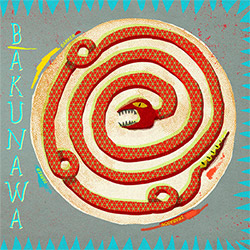


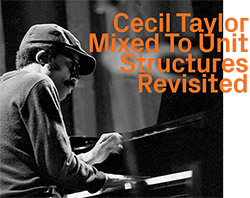


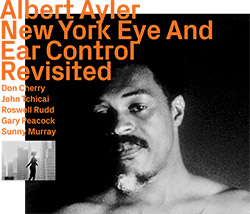
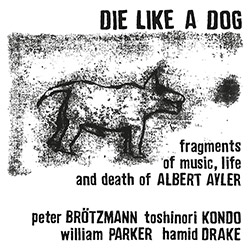
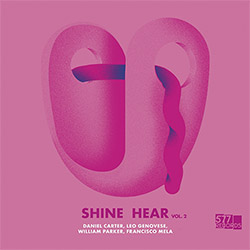



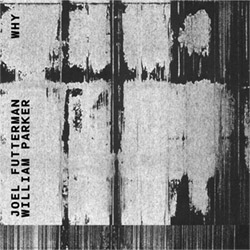

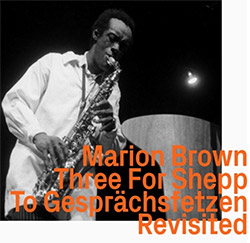
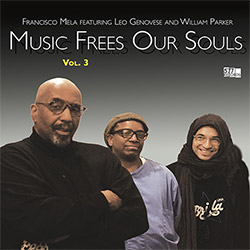
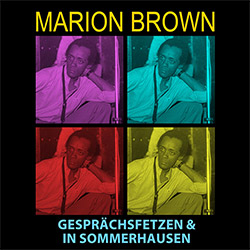

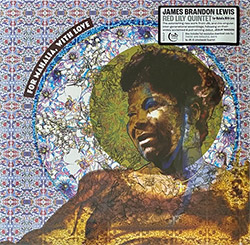



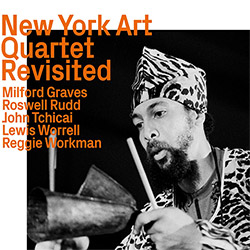
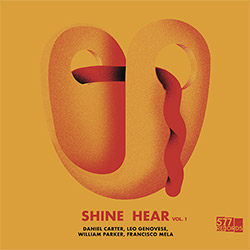

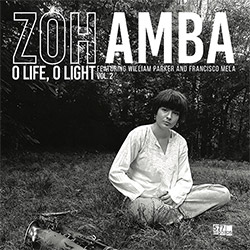







![Weston, Matt: Communism Has Appeared On The Scene [VINYL 2 LPs]](https://www.teuthida.com/productImages/misc4/35546.jpg)
![Coleman, Steve & Five Elements: PolyTropos / Of Many Turns [2 CDs]](https://www.teuthida.com/productImages/misc4/35476.jpg)
![Sorey, Tyshawn (w/ Diehl / Ragahavan): The Susceptible Now [DOUBLE VINYL]](https://www.teuthida.com/productImages/misc4/35477.jpg)
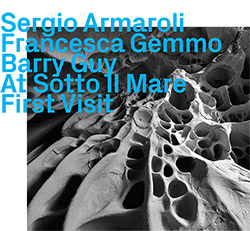
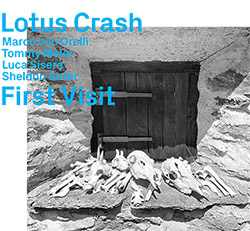
![John Coltrane Quartet (Coltrane / Tyner / Garrison / Jones): Impressions From Graz 1962, Revisited [2 CDs]](https://www.teuthida.com/productImages/misc4/35495.jpg)
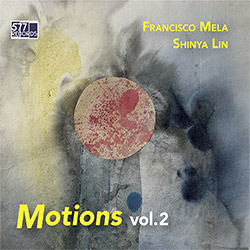
![Guy, Barry / Ken Vandermark: Occasional Poems [2 CDs]](https://www.teuthida.com/productImages/misc4/34849.jpg)
![Novoa / Carter / Mela Trio: Vol.1 [VINYL]](https://www.teuthida.com/productImages/misc4/35236.jpg)
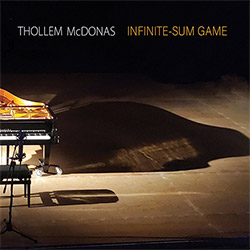

![Elephant9 : Mythical River [VINYL]](https://www.teuthida.com/productImages/misc4/34624.jpg)
![Evans, Peter (Evans / Eldh / Black): Extra [VINYL]](https://www.teuthida.com/productImages/misc4/35279.jpg)

![McPhee, Joe: Straight Up, Without Wings [BOOK]](https://www.teuthida.com/productImages/misc4/35454.jpg)
![Jeck, Philip: rpm [2 CDs]](https://www.teuthida.com/productImages/misc4/35455.jpg)
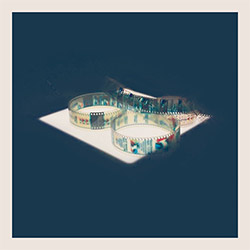


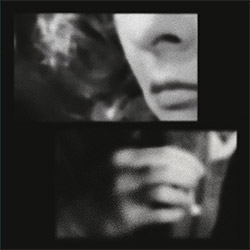







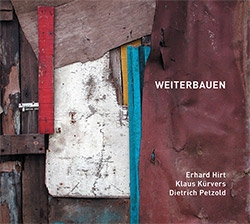

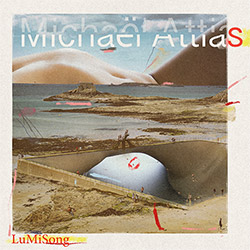
![Blaser, Samuel / Marc Ducret / Peter Bruun: Dark Was The Night, Cold Was The Ground [VINYL 10-inch]](https://www.teuthida.com/productImages/misc4/35492.jpg)



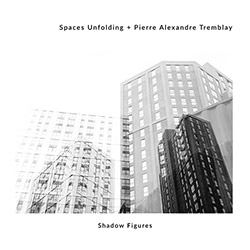

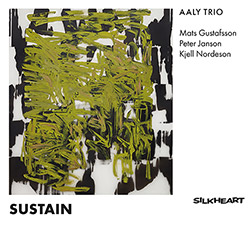
![Warren, Kenny (Warren / Hoffman / Ellman): Sweet World [VINYL]](https://www.teuthida.com/productImages/misc4/35451.jpg)


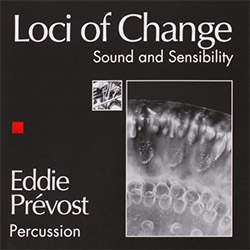

![Blake, Ran / Dave Knife Fabris: Live Amsterdam 2006, First Visit [CD + POSTCARDS]](https://www.teuthida.com/productImages/misc4/35275.jpg)

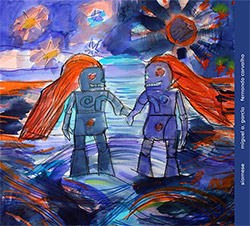


![DNS: Taking Big Bites Of The Khandas Three Cafes Deep [2 CDs]](https://www.teuthida.com/productImages/misc4/35334.jpg)

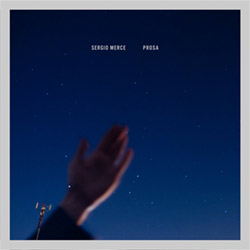
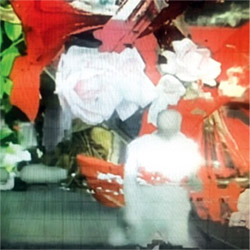

![Cleaver, Gerald: The Process [VINYL]](https://www.teuthida.com/productImages/misc4/34966.jpg)
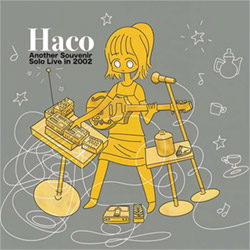


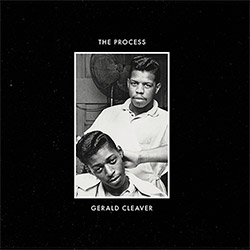
![Alva Noto: HYbr:ID II [VINYL 2 LPs]](https://www.teuthida.com/productImages/misc4/35201.jpg)

![Baron, Derek / Luke Martin: Distinct and Concealed [CASSETTE + DOWNLOAD]](https://www.teuthida.com/productImages/misc4/35079.jpg)
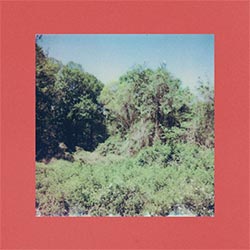
![Lyle, Erica Dawn : Colonial Motels [CASSETTE + DOWNLOAD]](https://www.teuthida.com/productImages/misc4/35080.jpg)


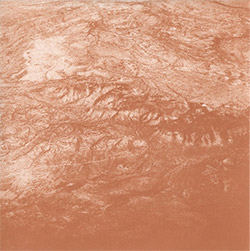
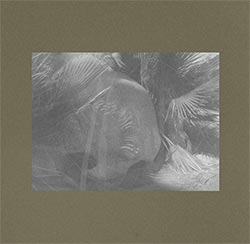
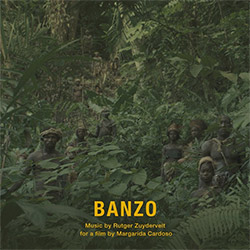




![Sanna, Claudio: Compositori Sardi Contemporanei II [2 CDs]](https://www.teuthida.com/productImages/misc4/35317.jpg)



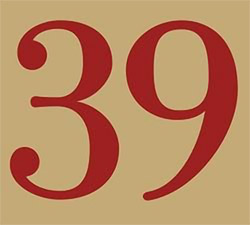
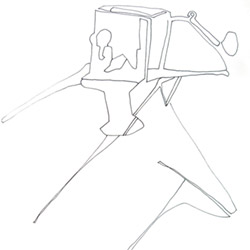


![Zurria, Manuel: Fame di Vento [3 CDs]](https://www.teuthida.com/productImages/misc4/35167.jpg)
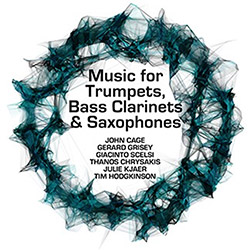
![Granberg, Magnus / Nattens Inbrott / Skogen: Holde Traume, Kehret Wieder! [2 CDs]](https://www.teuthida.com/productImages/misc4/35038.jpg)
![Frey, Jurg: Outermost Melodie [2 CDs]](https://www.teuthida.com/productImages/misc4/35039.jpg)

![Pavone, Jessica: Reverse Bloom [VINYL]](https://www.teuthida.com/productImages/misc4/34895.jpg)


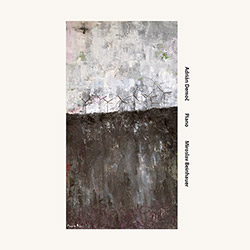

![Modney (Modney / Wooley / Gentile / Roberts / Pluta / Symthe / ...): Ascending Primes [2 CDs]](https://www.teuthida.com/productImages/misc4/34852.jpg)







![Elephant9 with Terje Rypdal: Catching Fire [VINYL 2 LPs]](https://www.teuthida.com/productImages/misc4/35355.jpg)
![Deerlady (Obomsawin, Mali / Magdalena Abrego): Greatest Hits [VINYL]](https://www.teuthida.com/productImages/misc4/34876.jpg)




![Haino, Keiji: Black Blues [2 CDs]](https://www.teuthida.com/productImages/misc4/35109.jpg)



![Surplus 1980: Illusion of Consistency [CD]](https://www.teuthida.com/productImages/misc4/35069.jpg)
![Staiano, Moe: Away Towards the Light [VINYL + DOWNLOAD]](https://www.teuthida.com/productImages/misc4/35037.jpg)



![Caveira (Gomes / Sousa / Abras / Ferrandini): Ficar Vivo [VINYL]](https://www.teuthida.com/productImages/misc4/34643.jpg)
![Gregg, J. J. / David Van Auken: Lunar Prairie [CD w/ DOWNLOAD]](https://www.teuthida.com/productImages/misc4/34611.jpg)
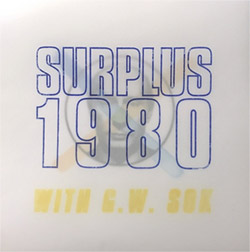
![Coultrain: Mundus [VINYL]](https://www.teuthida.com/productImages/misc4/32439.jpg)
![Mattin: Songbook #6 [VINYL]](https://www.teuthida.com/productImages/misc4/27317.jpg)
![Punkappella: Wake Up [7-inch VINYL]](https://www.teuthida.com/productImages/misc4/17519.jpg)
![Residents, The: WARNING: UNiNC.: Live And Experimental Recordings 1971-1972 [VINYL 2 LPs]](https://www.teuthida.com/productImages/misc4/31521.jpg)
![Coultrain: Phantasmagoria [VINYL]](https://www.teuthida.com/productImages/misc4/30142.jpg)
![Lennon, Sean Ono: Asterisms [VINYL]](https://www.teuthida.com/productImages/misc4/34517.jpg)
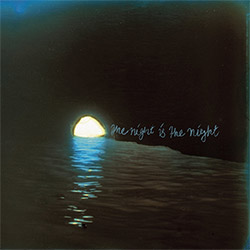
![Coley, Byron: Dating Tips for Touring Bands [VINYL]](https://www.teuthida.com/productImages/misc4/17906.jpg)

![Lost Kisses: My Life is Sad & Funny [DVD]](https://www.teuthida.com/productImages/misc4/lostKissesDVD.jpg)